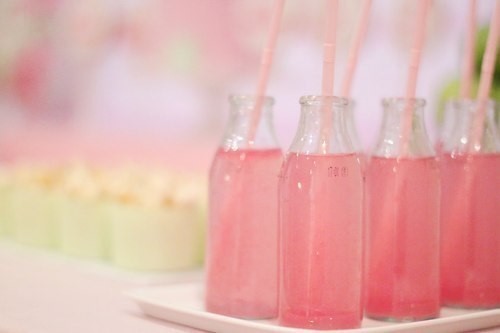
在美食中参悟人生作文【一】
记得小时候妈妈在无锡工作,那时她刚把我从老家接到无锡,她对我说:静儿,妈妈带你去吃好吃的!
老板,我要两份小馄饨,一份小笼包。不到一会儿,热乎乎的小笼上来了,我高兴极了。白白的小包子,我要吃掉你!我迫不及待地夹起一个,一不小心小包子被我戳破了,汁流出来了,我赶紧塞进嘴里,好烫,好烫!虽然汁没有了,但还是好烫。
妈妈看了我的吃法,不禁笑了出来:静儿,你应该这样吃。只见她先夹起了一个小包子,咬一小口,然后放在勺子上吹了吹,先把汤吸完再蘸上醋,一口一口吃掉。我学着妈妈的样子先咬一小口,然后吹了好久好久,我可不想再被烫到。我喝了一口汤,好好喝,果然一点也不烫了,鲜美的汤汁中有一点甜甜的味道。我又咬了一口小包子,好好吃,小包子里的肉也甜甜的。接着我蘸上一点醋,三两口就吃完了。
不一会儿,我就吃完了四个。当我伸出筷子想夹最后一个时,我看了看妈妈,她才吃了三个,我不好意思地把筷子收了回来:妈妈,这个给你吃。宝贝,你自己吃吧。我坚持把小包子夹给了妈妈,妈妈你吃吧,我吃饱了。
在美食中参悟人生作文【二】
新村这地方,美食无处不在,不仅有清甜可口的意大利糖水,更有原滋原味的特色腐竹啊什么的。虽然这一直都没有美食节,可这里的美食却又层出不穷。
我最熟悉的就是腐竹了,因为以前,朋友家对面就是一家做腐竹的老传统,每天都会在那旁边的空地上,每天都看那老爷爷做,那的腐竹是很不错的,就连香港TVB都到那拍过节目呢!
说到制作过程,那是纯手工的。因为就是手工生产,所以不会像工厂知道那样有大量的防腐剂啊什么化学品,让人吃得放心,味道也自然许多。
在那有四个锅,锅下面是烧柴火的,可见是真的老传统了,锅里是豆浆,锅旁都配备有风扇。
那里的豆浆也是原生态手工的。黄豆泡水、去皮、磨制,然后加水成浆。热豆浆在风扇的作用下,豆浆的表面就会有一层显而易见的黄黄的东西,无论是看起来还是摸起来,都像一张软纸一样,那就是腐竹的前身。腐竹有很多种做法,但一般情况都是制作者会用刻刀先从那软皮中间把它割开,在圆锅里,割开之后就是半圆的了。
然后制作者就会熟练地从最恰当的地方将她挑起,挂在过上方早已准备好的竹子上。因为是有几个锅,这个锅挑完了,又可以去挑另一锅,挑完四锅后,第一锅又浮着腐竹了。当竹子挂满后,就会拿出去晒晒,过几天,就会成为真正的好腐竹了。
新村腐竹,称得上是腐竹中的极品了,远近闻名,所以早上都会有很多人都特地前来购买腐竹,远的近的都有。
生产腐竹,不仅可以卖腐竹,也还能卖豆浆呢!真是一举两得!
新村的腐竹,真是值得品味!
在美食中参悟人生作文【三】
在我的记忆里,我最喜欢吃的是蚕豆炒鸡蛋。
那一年,我一回家,就有一股香味扑鼻而来。我立马问外婆:“外婆,您做了什么呀?这么香?”“这不,给你做了你最喜欢吃的蚕豆炒鸡蛋!”我过去一看,外婆正在炒蚕豆鸡蛋。绿绿、青青、脆脆的蚕豆,放入锅里去和金黄的油在快乐地做游戏。炒了一下,脆生生的蚕豆就变软了,鸡蛋的蛋清一下变白,再加一些白开水焖一下,炒好后,一股甜甜的香味一下子窜入你的鼻子里,让你胃口大开。
每次吃这道菜,都有一种回味无穷的感觉,吃完了还想再吃,而且口里不时还有点清清的.甜味儿呢!可能你还不知道,如果你还想更好吃的话,你可以加上一点甜甜的酱,吃起来心里会有一些奇妙的愉悦感。
每次我吃完了,都像一种飞天的感觉,像人见了金子那样开心。每次我吃这道菜的时候,都看见外婆看着我在笑,好像看见我很爱吃,打心眼里很高兴,那笑一样很温暖,很回味!
如果天天能吃到这“人间美味”,那不是飞天是什么?每次我想到这道菜,就会想到外婆那慈爱的笑。
在美食中参悟人生作文【四】
冰淇淋是生活中不可缺少的一道美食。夏天没胃口时,尝些冰淇淋,是一个迅速补充体力降低体温的好方法。尤其对小朋友来说更是挡不住的诱惑,聪明的妈妈能在小朋友不愿吃饭时,偶尔改变方式以冰淇淋取代主食,同样能摄取营养和热量,漂亮的颜色又让人产生食欲。
你知道吗?美国每年能销售10亿加仑的冰淇淋,8%的牛奶最终变成冷冻食品。如今,各种各样的冰淇淋店更是遍布世界。现在就让我们一起看看冰淇淋的历史吧。
The earliest reports of people enjoying flavored ice desserts come from the Romans and the Chinese. Marco Polo returned from his famous expedition with fruit-flavored ices, reporting that Asians had been making them for thousands of years. These delicacies became popular in France in the 1500s, but only among royalty. Over the next few centuries, the process of making them evolved from hauling mountain ice to salt/ice freezing methods. Cream was introduced as an ingredient, and by the 1700s, people were enjoying a dessert that was very similar to today's ice cream.
The hand-cranked ice cream freezer was first developed by Nancy Johnson in 1846. Ice was readily available from large warehouses in that era, so ice cream became a treat that could be enjoyed by almost anyone, not just the rich. Ice cream making was revolutionized again in 1851, when Jacob Fussel started the first wholesale ice cream manufacturing operation in Baltimore, Maryland. Fussel's dairy business had excess cream and he couldn't figure out what to do with it. He tried using it to make ice cream, and before long his ice cream business outsold the rest of the dairy.
The business slowly evolved for the next few decades. Manufacturing methods and ingredients improved, while refrigeration technology became cheaper and more efficient. By the 1920s, home refrigerators and freezers became more common, which gave the ice cream industry another boost. Sugar was rationed in the US during World War I, but the ice cream industry convinced the government that ice cream was an "essential food”. Ice cream factories were allotted sugar rations and production continued.
Ice cream increased in popularity until the Depression years caused a drop in sales for virtually all non-essential goods. Sales increased in the years leading up to World War II before leveling off in the post-war years. The rise of the giant supermarket created demand for cheaper, mass-produced ice cream, but quality suffered. The 1960s saw a resurgence in "premium"ice cream, while the following decades saw the market fragment into low-fat varieties for the health-conscious, including frozen yogurt, fruit bars, ice milk, fat-free ice cream, and dozens of other varieties. However, ice cream still makes up about 60 percent of the market share among frozen desserts. While ice cream is enjoyed worldwide, it has become an American tradition











